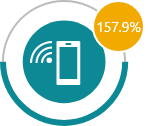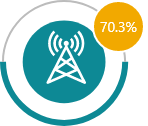BACKGROUND
Tuberculosis (TB) remains a significant cause of morbidity and mortality in Viet Nam, and it is included in the list of top 30 high TB burden countries in the world, and has a TB incidence of nearly 176 per 100, 000 individuals annually. [1] In 2020, Vietnam was one of the 10 countries accounted for about 70% of the global gap between the estimated global incidence of MDR/RR-TB each year and the number of people enrolled in treatment. [2]
As per the 2020 estimates, out of the 172,000 people with TB in Viet Nam, 101,705 got notified. With nearly 3,714 of people getting confirmed for MDR/RR-TB and another 340 confirmed cases of XDR-TB, Viet Nam is also included in the list for the top 30 DR-TB high burden countries. [1] [2]
During the COVID19 pandemic, country’s TB case notification has remained broadly unimpacted in 2020, however, with the first wave hitting in later part of 2021, the TB case notification has been heavily impacted and the health system is now making efforts to revive its strong TB surveillance practices and reach back to the previous rates.
Vietnam has approximately 90 million inhabitants in 63 provinces, 700 districts and 11145 communes. [4] Regarding the TB and MDR-TB epidemiology in Vietnam, the country is among high burden countries with MDR TB. [5]
In Vietnam, TB surveillance is done through a web-based system that was implemented since 2009 and used by TB staff nationwide from district to national level since 2015. [1]
The Vietnam TB Information Management Electronic System (VITIMES) is a system designed to collect patient-based data on patients screened and notified and their treatment outcomes. [2] VITIMES was introduced in two phases: Phase I at the provincial level with aggregated data being entered from quarterly paper reports from the districts and Phase II at the district level where individual patient information is entered. Phase I was implemented by all 63 provinces in 2010; Phase II coverage was implemented nationwide by 2015. [2]
In 2011, the Vietnam NTP introduced e-TB Manager for MDR-TB surveillance.[7] [7] The largest TB hospital in Ho Chi Minh City was engaged in its roll-out. This was developed by MSH with support from USAID and WHO. The system was stabilized in 2014. The NTP has also developed a pharmacovigilance component with e-TB Manager to monitor adverse events in patients with bedaquiline-containing treatment regimens. The Clinton Health Access Initiative supported the NTP to link an SMS alert system with e-TB Manager for PLHIV suspected of having DR-TB.
Vietnam’s National Strategic Plan (NSP) 2021-2025 aims to decrease TB transmission by finding and treating all TB cases.
The ministry of Health (MOH) Vietnam and the NTP is prioritizing patient-centered care, bold policies, expanding partnerships, and strengthening health systems, as well as investing in key innovations and research, through the new NSP 2021-2025 which is aligned with the National Action Plan to End TB by 2030. [3]
This assessment report aims at providing strategic recommendations and way forward to country leadership in developing and scaling a comprehensive case-based TB surveillance system while leveraging the existing infrastructure, in-house capacity and assets. Detailed recommendations are provided in the later section of this country report.

STATUS OF CASE BASED TB NOTIFICATION
There are two primary tools implemented by the National TB program for TB surveillance :
✓ VITIMES: a web-based system designed to collect patient-based data on patients screened for TB, notified TB cases and the treatment outcomes of TB patients.
It was implemented in two phases, in phase I VITIMES was implemented at the provincial level with aggregated data being entered from quarterly district paper reports. In Phase II, VITIMES was implemented at the district level where individual patient information was collected. By 2015, the system was implemented in all 63 provinces and over 90% of the 701 districts.
✓ e-TB Manager: to capture MDR-TB patient data e-TB manager was introduced in 2011. with multiple iterations and contextualization, it was stabilized in 2015 in alignment with government policies.
e-TB manager is available at all current PMDT treatment centers and treatment satellites, a total of 41 by the end of 2014.
The NTP is working towards integrating VITIMES and e-TB manager into a single comprehensive system.
The current systems generates quarterly reports which are being accessed used at district, State and national program managers.
In 2015, a m-health module was introduced and piloted for “Monitoring and treatment support” of TB patients.
Through this module, NTP has been able to send out medication reminders to TB patients through SMS for taking drug on time, follow-up exam on-time, and provide knowledge about TB etc.
Further this module support monitoring of cases at commune level. TB specialist at commune level will input monitoring report while/ after visiting TB patient's household.
The module is under discussions for scale-up. It is tied up with VITIMES. NTP is currently supporting 3G fee for commune staff and is exploring funds for scale-up.

ELECTRONIC TB NOTIFICATION DATA COLLECTION AND USE
| TARGET | CURRENT SCALE | COLLECTION TOOLS | DATA TYPE | DATA USAGE | |||
|---|---|---|---|---|---|---|---|

National Level
|
Data Not Collected from this level
|
Real-time VITIMES and e-TB Dashboard | |||||

Provincial
level
|
63 | 63 | VITIMES/e-TB Manager | Case Based | Real-time VITIMES and e-TB Dashboard | ||

District
level
|
713 | 713 | VITIMES/e-TB Manager | Case Based | Real-time VITIMES and e-TB Dashboard | ||

Facility level
|
30 DR-TB Centres | 30 DR-TB Centres | VITIMES/e-TB Manager | Case-based | Real-time VITIMES and e-TB Dashboard | ||

Community Level
|
Data not collected from this level | ||||||

CASCADE OF CARE MONITORING
PRESUMPTIVE SCREENING
TB Testing
Treatment Initiation
Treatment Monitoring
Treatment Outcome
Contact Tracing






| KEY DATA VARIABLES | Yes/No |
|---|---|
| Demographic details (Age, DOB, Gender) |

|
| Address and contact details (Country, Division, District, House address) |

|
| Geolocation (GPS coordinates of the household) | |
| Contact details (Phone number/Mobile number, WhatsApp, Email etc.) |

|
| Health Facility address |

|
| Type of health facility (Public, Private etc.) |

|
| Site of TB (Pulmonary, Extra-pulmonary) |

|
| Type of diagnostic test (Microscopy, GeneXpert, TruNaat, CXR, etc.) |

|
| Date of test result |

|
| Drug susceptibility (DSTB, DRTB) |

|
| Treatment Regimen |

|
| Treatment start and end date |

|
| Co-morbidity (HIV, Diabetes, COVID-19 etc.) |

|
| Treatment monitoring/adherence |

|
| Treatment outcomes |
| KEY INDICATORS | Yes/No |
|---|---|
| Presumptive screening (proportion) |

|
| Treatment initiation (proportion) |

|
| Treatment monitoring/adherence |

|
| Treatment outcome (proportion) |

|
| Spatial distribution of TB notification | |
| Age-group & sex wise aggregate numbers and proportions notified |

|
| Basis of diagnosis wise aggregate numbers and proportions notified |

|
| Type/site/drug resistance wise aggregate numbers and proportions notified |

|
| Provider source-wise aggregate numbers and proportions notified |

|
| Comorbidity wise aggregate numbers and proportions notified |

|
| Key-population wise aggregate numbers and proportions notified |

|
| Estimate/Target wise notification/treatment coverage (proportions) |

|
| Provider-type disaggregated treatment outcomes (proportions) |

|
| Comorbidity disaggregated treatment outcomes (proportions) |

|
| Key population disaggregated treatment outcomes (proportions) |
 Digital
(aggregated)
Digital
(aggregated)
STATUS OF ELECTRONIC CASE BASED TB SURVEILLANCE
Electronic System For Case Based TB Notification

VITIMES (Vietnam TB Information Management Electronic System) and e-TB Manager are the two digital tools for TB case notification system.
Lowest Unit For TB Notification Digitisation

District Level (TB public Units)
Stage Of Notification

Registration for presumptive screening
Level Of Access And Use Of TB Notification Data

Facility level
Private Sector Notification

Using VITIMES in available clinics. Few private players are submitting paper based to district level where it is entered in VITIMES
Frequency of digitization of TB notification

Real time
Mode Of Follow-Up With Notified Cases
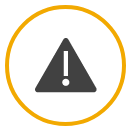
Phone calls, Household visits, notification trigger using Mobile app
Scale Of Implementation

National roll out
Contact Tracing For TB Notified Cases
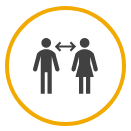
ACIS application has contact tracing module integrated in 2018
Multi-Channel Enablement

VITIMES and e-TB web application
Govt. order for mandatory TB notification

Yes
PRIVATE SECTOR NOTIFICATION

Currently, Private sector notification accounts for approximately 10% of all TB notification. The private sector providers are using VITIMES for TB notification. Private sector sends data jointly with the public health reporting units (Districts). It is currently aggregate, or case based, depending upon the local infrastructure and manpower available.
COUNTRY IT CAPACITY

Country Server
Vietnam has an in-house country server dedicated to the TB program
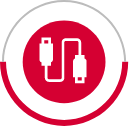
Interoperability
Necessary APIs available, Data export available
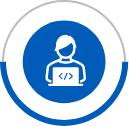
Country IT team
In-house country IT team supported by outsourced IT team
CURRENT RESOURCES AVAILABLE
In 2016, USD 15,000 was allocated for the platform upgrade but the actual development was roughly accounted for USD 50,000.
Annual recurring cost for maintenance and upgrading, Server renting, Maintenance, Upgrading fee, SMS fee (mHealth function), and Support internet fee for district levels is approximately USD 140000.
Annual recurring cost for developing the IT system is USD 2000-5000.

MILESTONES ACHIEVED AND ROAD MAP
2009
VITIMES introduced for case based TB surveillance
2010-11
e-TB Manager introduced for DR-TB notification and piloted
2013
Knowledge transfer and source code handover for eTB manager by MSH
2014
Embed SMS function for referral and treatment reminder
2016
VITIMES workflow upgraded by MAC e-TB manager upgraded with WHO support
2018
Connecting VITIMES with ACIS contact tracing module
2020
Upgrading to advanced real-time Dashboard
2021
Upgrading VITIMES to version 3 and merging VITIMES and e-TB manager in one system
2022-23
Completion of LTBI management, ADSM module development, Gx Alert integration with VITIMES, Development of VITIMES Mobile, DHIS2 integration

OTHER COMPLEMENTING DIGITAL TOOLS
| Purpose | Tools | Channel | Developed By | Supported By | Scale |
|---|---|---|---|---|---|
| Digital Adherence | Within VITIMES & e-TB manager | Web application | MSH | WHO, USAID | National Roll -out |
| Logistic Management | Within VITIMES & e-TB manager | Web Application | MSH | WHO, USAID | National Roll -out |
| Laboratory Information Management | Within VITIMES & e-TB manager | Web Application | MSH | USAID | National Roll -out |
| GX Alert Integration | GX Alert notification | Web Application | System one | CDC | Pilot |
| Digital CXR Integration | PACS (connected to the hospital information system) | Web application | Pilot | ||
| Qure.Ai | Mobile app | FHI and USAID | Pilot | ||
| DrAids | Mobile app | Vin Group | Vin Group | Pilot | |
| Community led Monitoring | ZeroTB Vietnam | Social Media Channels (facebook) and website | |||
| Contact Tracing | ACIS | Web Application | TechUp | CHAI | Pilot |



KEY CHALLENGES

Multiple channels for data entry : Vietnam has two parallel electronic systems, and it also uses paper-based data recording and reporting. Several facilities are more comfortable with paper-based reporting, and hence electronic reporting is still relatively unpopular. Thus, resulting in delayed data entry and access to real-time information.

Multiple Data information systems and lack of dedicated staff for data entry: Data capturing, and reporting is currently relied on health service delivery staff and case-based data entry is done in multiple information systems which causes burn-out in its health delivery staff, thus impacting quality of care.

Data is not real time: Data available is not real-time and the reporting frequency varies from daily at some sites to quarterly at others.

Missing Data: Due to multiple systems for data entry and lack of dedicated data entry staff often results in missing data as not all data is entered into the system.

Lack of Mobile application: All data entry is web based. No mobile device integration.

Dashboard configuration: Dashboards have not been configured as of now (in process, with Global Fund support) and are also not considered to be of much value as the reporting is not real time.

NTP VISION
- ❖ System upgradation and integration into one comprehensive system for both DS-TB and DR-TB. Integrating e-TB Manager and VITIMES into a single system for all TB notification data reporting.
- ❖ Developing systems capability to get integrated with other national systems to ensure data sharing and timely decision making.
- ❖ Establishing a central data warehouse to make enable effective data use

RESOURCES NEED
Based on multi-stakeholder discussions, country feedbacks and recommendations for full-filling country’s vision, we have put together an estimated investment requirements and areas needing support for provisioning of a comprehensive case based digital TB surveillance system
Hardware and Infrastructure :

Mobile Devices (for data collection): Vietnam has 713 DS-TB and 30 DR-TB services units and to provision mobile device for every facility for case-based TB surveillance, USD 111,450 will be needed assuming USD 150 per mobile devices. If needed, additional budget can be booked for community settings.

Tablet (for data use):Vietnam has 713 DS-TB districts units, 30 DR-TB units and 63 provinces to promote active data use, each district and region should be given a tablet which would cost roughly around USD 161,200 assuming USD 200 per Tablet devices.

Internet: In case WiFi is not available in each facility, then mobile internet cost of around USD 241,800 should be considered (assuming USD 100 mobile data cost for the entire year per facility, district and regional user).

Server: Based on the current volumes of new cases, Vietnam would need an investment of USD 30,000-40,000 for next 3 years for server and server maintenance.
Note: Existing devices available through other health programs can be leveraged. In that case, the above-mentioned costing can be accordingly considered.
Software Development :

Based on various multi-stakeholder meetings and given the fact Vietnam already have a strong foundation for e-TB Manager system for TB, around USD 250,000-400,000 should be budgeted for a comprehensive TB surveillance system and analytical dashboard for data use.
Capacity Building and Implementation :

After the software development, a dedicated pool of technical resources will be needed to support platform administration, data management and support. A team of 4-6 skilled resources attributing to a cost of around USD 48,000-72,000 per annum should be budgeted (or USD 144,000-216,000 for 3 years assuming USD 1,000 per month per resources). Additionally, reskilling of the current IT team should be budgeted.

Training : This would involve training material development and onsite and remote training of the trainers. Training sessions should be planned for each 713 districts over a period of 3 years which could cost roughly USD 100 per training amounting to USD 71,300 which will be further supported with e-Learning packages. Also, a dedicated trainer should be budgeted in case there is none.
TOTAL investment of around USD 1.5 - 2 million for 3 years be needed on developing a comprehensive case-based digital TB surveillance system for Vietnam .
Disclaimer: The above budget is a function of number of facilities, districts and regions and expected volume of data. This only provides a ballpark figure of what is needed in terms of budget.

Recommendations
Following are some of the key recommendations suggested based on the findings of this assessment of country’s digital ecosystem and infrastructure:

Strategic Costing Plan
As a first step it is important for the country to create a comprehensive costed action plan for development, implementation and scale up of the TB case-based surveillance system.
Based on NTP’s vision and the recommendations for improvements, the plan should clearly define targets with actionable interventions and funding requirements supported with a detailed work plan along with timelines. The plan will help the country to assess and monitor the progress to ensure that any risks can be duly mitigated.
Tentative timeline: Month 0-1

System Integration
The NSP (2021-2025) clearly highlights the importance of strengthening the TB Notification information system for improving all the TB service provisions. [3]
Vietnam has already developed and deployed a case-based TB notification VITIMES and e-TB manager for DS-TB and DR-TB respectively. Both the systems have been rolled out in 713 District DS-TB Units and 30 high burden DR-TB sites. The presence of the system lays a strong foundation for executing the vision of creating a comprehensive and integrated real-time case-based TB surveillance and notification system.
Currently VITIMES and e-TB manager are in process of upgradation and needs to be integrated into one system. Additionally , the architecture and infrastructure needs to be extended to support integration with external systems like GeneXpert ,TruNat, Digital X-Ray outputs, Pill Boxes and other digital adherence tools which help in use the data effectively for the patient continuum of care and as a vision of an integrated Health Information Management System (HMIS).
These data exchanges can be made seamless with API feature offered by both the platforms.
Additionally , other recommended data exchange/ ETL tools like Talend, Informatica[10] [10.1] , [10.1] makes systems data management task much easier and simultaneously improves data warehousing. These exchange tools also comply with FHIR, GDPR standards for more secured and seamless data exchange.
Tentative timeline: Month 0-6

Data Use
The NSP emphasizes on the importance and need for improve data use. This can be made possible by making case-based TB data across systems more real time and useful.
In the existing dashboard there is a strong need to strengthen and expand the data visualization scope and making effective use of data for predictive modelling, data science and for advanced analytics it is also recommended to use best of the breed tools like Tableau , Power BI [11.1] , [11.2] which offer these features. The current e-TB manger platform offers APIs which can connected for these applications and be used as an extended analytical component of the data analysis framework.
This would help to collate compare and review data across eTB Manager & DHIS2 systems.
Tentative timeline: Month 6-12

Data Integration
One of the challenges highlighted by NTP is the leveraging the data collected from the multiple sources like e-Tracker into the main DHIS2 systems as a central warehouse for effective use.
To ensure that there is a seamless integration of data from multiple data systems like e-Tracker and other data sources like excel files maintained at facilities without any data loss , the DHIS2 data upload / transformation API should be explored.
There may also be some other distributed data collection systems and processes which are existing, and it might be difficult to replace them, in such a scenario data can be extracted, transformed and loaded into the central database.
While transformation and data export options offered by the current systems can be used for this other source ETL tools over Postgres DB and / or WHO powered XMart [12] which can be installed within the current environment can also be considered.
Tentative timeline: Month 6-12

Mobile App
One of the challenges reported by the NTP during the data collection processes is inconsistent data connectivity/network issues which delay reporting of cases.
The advantages for a mobile application include better performance , effective use of device features like in house system updates, usage of location , security measures and tracking user patterns and issue log mechanisms and other analytics measures.
Several mobile solutions for real time case-based notifications can be explored for local adaption. Open-source technologies like DHIS2, Mobile App, ODK and KOBO are some notable examples. [13.1] , [13.2] , [13.3]
Tentative timeline: Month 0-6

E-Learning
Any national scale roll-out will have its own capacity and training challenges which requires development of a comprehensive e-Learning module allowing all health staffs involved in data collection process for training not only on the new VITIMES and e-TB tracker-based application but also on the latest manual of procedure and continued medical education on TB care.
To address the challenges with periodic training of facility level staff to orient them on using VITIMES and e-TB for direct data reporting, the MOH must engage in development of a comprehensive e-Learning module for app training.
Training tools like Moodle [14] built on standard Learning Management System (LMS) framework can be reviewed for application rollouts.
Additionally for training and updates on the latest manual of procedure and continued medical education on TB care modules can be developed for TB Health providers, administrators at facility and district level to develop and enhance M&E competencies for ensuring a consistent program oversight, especially for the case-based tracker roll out within the existing applications Guide TB platform developed by WHO Philippines is a good example of eLearning module for health staffs involved in TB care.
Tentative timeline: Month 1-4

Server Augmentation & Infrastructure Upgrades
Based on the architecture, the system upgrade would be done with the database, a middleware system, the operating system or the hardware.
Additionally, the architecture should be such that it supports the integration layer which would be needed for data exchange with national/external systems.
The technologies that need to be brought in and the areas of inter-connection need special focus. A review of the existing server architecture is advised along with deployment of automated load testing tools like Selenium and Appium [16.1] , [16.2] which can help in database sizing and monitoring adaptation needs for planning.
Tentative timeline: Month 6-24

Capacity building for application maintenance
Planning for capacity building includes workforce assessment, ranging from ICT professionals to health care workers. Since the application requires regular updates and adaptations, the system support team requires trained personnel on the technology stack in use.
Strengthening the NTP team with trained system administrators will help in reducing costs (in seeking technical support) and improving and expediting the planned implementations.
Tentative timeline: Month 6-24

Patient engagement strategies
Establishing a direct and secured mechanism for engaging with patient has potential for drastic improvements in tracking lost to follow-up patients.
Auto generation of notification and messaging by the system through communication channels like Social Media, IVRS and SMS outbound messages should be explored. Open-source applications like Open MRS can be used for these activities. [15]
Tentative timeline: Month 6-24

Device Procurement
One of the limitation highlighted by NTP is the need to improve the data collection processes at the facility level. To streamline this, procurement, distribution and maintenance of the required data entry equipment like laptops, mobile/tablet devices should be done on an urgent basis. Improving the current infrastructure at the facilities is crucial for a complete transition to digital notification.
Tentative timeline: Month 0-1

Expanding Modules VITIMES
The recommendation is to integrate and include the data currently collected from applications like ACIS application via APIs and also expand the additional modules on Contact Tracing and Presumptive Screening, LTBI in VITMES to actively find the cases and determining the possibility of contacts being infected with TB would reinforce contact investigations by enhancing prioritization so high-risk contacts can be focused on first.
The additional modules can be built on by leveraging on the existing platform of VITIMES and expanding it with new upgraded version of the application.
Tentative timeline: Month 12-24

Unique Identifiers
There may be duplication of data since multiple systems are used for data entry. This also results in missing out some crucial information to track and follow up the patients.
Having a centralized Unique Patient ID system or leveraging the existing national ID and an improved search functionality can help drastically reduce the duplication of case-based records.
It would also ensure that patients are tracked, monitored and followed up throughout the treatment journey.
Tentative timeline: Month 0-6

Community Monitoring Systems
As expressed by the NTP, the national TB notification and surveillance system should have also consider data integration with their current social media channels and also explore use of ready-to-use open source CLM platforms like One Impact.
Tentative timeline: Month 12-24
ACKNOWLEDGMENT
We thank the National TB Program Manager Prof. Nguyen Viet Nhung and the entire team for participating and engaging in the assessment. We would also like to extend our gratitude to Ms. Luong Anh Binh for providing valuable insights into Vietnam’s vision for creating a comprehensive case-based TB surveillance and notification system
CONTACT DETAILS
National Lung Hospital
National Tuberculosis Control Program
No. 463, Hoang Hoa Tham Str., Ba Dinh Dist., Hanoi,
Vietnam
Telephone : +84 913151586
Office phone number : +84 43 8329229, or +84 437618396
Fax:+84 43 8326162
REFERENCES
- The second national tuberculosis prevalence survey in Vietnam: https://journals.plos.org/plosone/article?id=10.1371/journal.pone.0232142 .
- Global Tuberculosis 2021; World Health Organization: https://www.who.int/teams/global-tuberculosis-programme/tb-reports.
- Vietnam Tuberculosis Roadmap Overview, Fiscal Year 2021: https://www.usaid.gov/sites/default/files/documents/Vietnam_Narrative_TBRM21_TBDIAH_Version_Final.pdf.
- Tuberculosis case notification data in Vietnam, 2007 to 2012: https://www.ncbi.nlm.nih.gov/pmc/articles/PMC4410103/.
- Challenges in detection and treatment of multidrug resistant tuberculosis patients in Vietnam: https://bmcpublichealth.biomedcentral.com/articles/10.1186/s12889-015-2338-5.
- Difficulties in tuberculosis infection control in a general hospital of Vietnam: a knowledge, attitude, and practice survey and screening for latent tuberculosis infection among health professionals: https://bmcinfectdis.biomedcentral.com/articles/10.1186/s12879-019-4593-z
- Process of implementing e-TB Manager, 2008–2016: a summary of 10 countries: https://pdf.usaid.gov/pdf_docs/PA00D5R8.pdf
- Data reportal, digital 2021: Vietnam: https://datareportal.com/reports/digital-2021-vietnam?rq=vietnam, https://www.informatica.com/
- Top Countries by Smartphone Users: https://newzoo.com/insights/rankings/top-countries-by-smartphone-penetration-and-users/
- System Integration tools (Talend, Informatica) : https://www.talend.com/solutions/data-protection-gdpr-compliance/
- Data Visualization Tools ( Power BI , Tableau ) : https://powerbi.microsoft.com/en-au/
- WHO Xmart : https://portal-uat.who.int/xmart4/docs/general/Overview.html
- Open Source Mobile Applications ( DHIS2 Mobile App : https://dhis2.org/android
- Application Training Tool : https://moodle.org/
- OPEN MRS : https://openmrs.org/,
- Performance Tools ( Selenium , Appium ) : https://appium.io/
